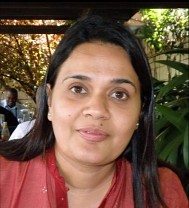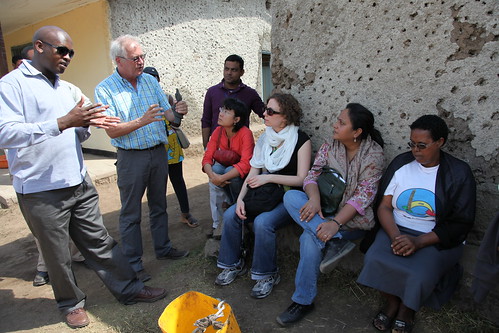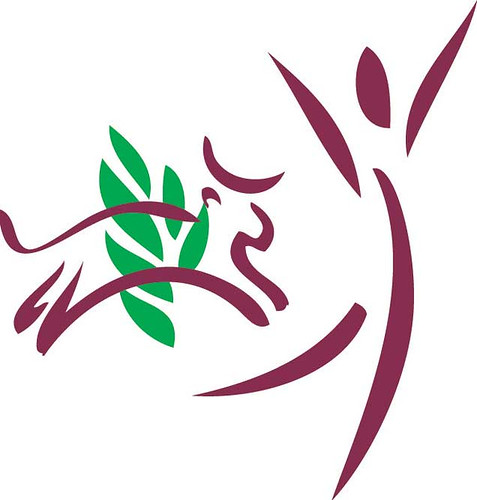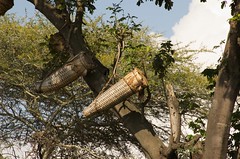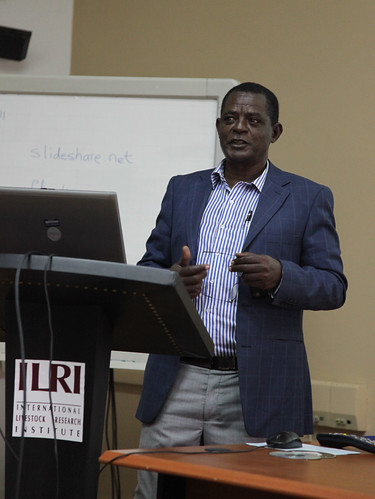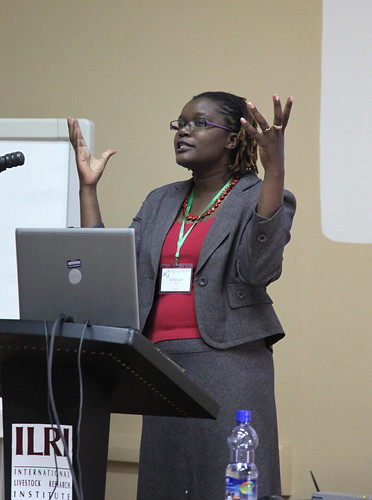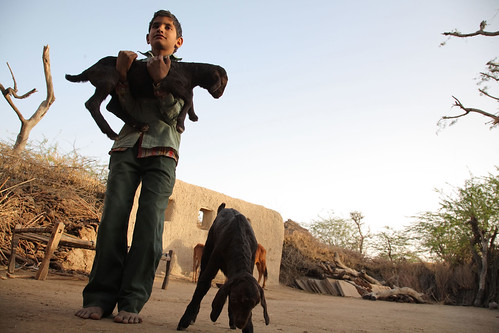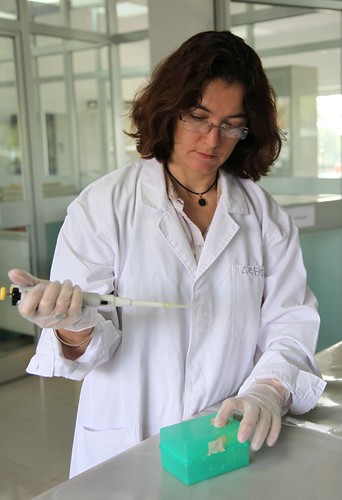Head of capacity strengthening ILRI, Purvi Mehta-Bhatt delivered a lively presentation yesterday in New Delhi explaining how capacity building is an ‘impact pathway’ linking agriculture, nutrition and health for human well being (photo credit: ILRI).
Yesterday in New Delhi, Purvi Mehta-Bhatt, head of Capacity Strengthening at the International Livestock Research Institute (ILRI), was one of three speakers to make a presentation during a side session at the international conference ‘Leveraging Agriculture for Improving Nutrition and Health’ being put on this week by the International Food Policy Research Institute (IFPRI).
Saying it was ‘great to be home, in India’, Mehta-Bhatt, who is an Indian national based at ILRI’s Nairobi headquarters, started her 12-minute talk by getting down to basics—the basics of an elephant, that is. She told a ‘small story’ of an elephant that landed in a land where nobody had seen an elephant before. Everyone looked at this new beast in different ways, each seeing only a part of the animal. Even though all were looking at the same object, each interpreted the beast very differently, according to the small part they could see of it and according to their own interpretations. ‘This is pretty much the story of the three sectors we are talking about—agriculture, nutrition and health,’ said Mehta-Bhatt. ‘We are all in our own silos’, she said, and need to see the beast whole.
Mehta-Bhatt sees capacity strengthening work as an important ‘impact pathway in linking these three sectors together’.
‘A piecemeal approach won’t work,’ she warned. And although ‘this is nothing new’, she said, we still have limited capacity and understanding in this area, and only a few concrete case studies to show where linking different stakeholders in a health outcome has worked. As someone recently complained to her, it’s all very well talking about bringing all stakeholders together, but when has that ever ‘come out of Powerpoints’?
‘Capacity development is not just about training programs,’ says Mehta-Bhatt; ‘it goes beyond individual capacity building; it brings in systemic cognizance and impinges on institutional architecture, and all this happens in a process of co-learning, where messages are taken both from lab to land and from land to lab.’
Among ongoing ILRI initiatives that make use of multi-national, multi-disciplinary and multi-sectoral capacity building approaches are an ILRI-implemented Participatory Epidemiology Network for Animal and Public Health (PENAPH) with seven partners; a NEPAD-sponsored Biosciences eastern and central Africa Hub facility managed by ILRI in Nairobi and hosting many students from the region; a Stone Mountain Global Capacity Development Group of 11 members that is mapping existing capacities in the field of ‘one-health’ and co-led by the University of Minnesota and ILRI; and an EcoZD project coordinated by ILRI that is taking ecosystem approaches to the better management of zoonotic emerging infectious diseases in six countries of Southeast Asia and helping to set up two regional knowledge resource centres at universities in Indonesia and Thailand.
All of these projects, she explained, have capacity strengthening as a centrepiece; all are working with, and building on, what is already existing at the local and regional levels; and all are being conducted in a process of co-learning.
Mehta-Bhatt finished by finishing her elephant story. Capacity development, and collective action for capacity development, she said, can link the three sectors—agriculture, nutrition and health—allowing them not only ‘to recognize the elephant as a whole but to ride it as well.’
Watch the presentation by Purvi Mehta-Bhatt here:

